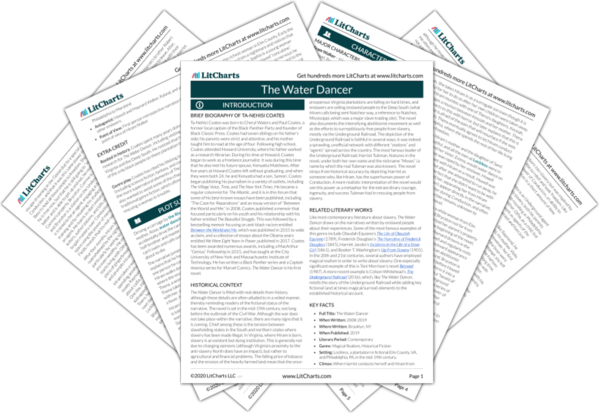Welcome to the LitCharts study guide on Ta-Nehisi Coates's The Water Dancer. Created by the original team behind SparkNotes, LitCharts are the world's best literature guides.
The Water Dancer: Introduction
The Water Dancer: Plot Summary
The Water Dancer: Detailed Summary & Analysis
The Water Dancer: Themes
The Water Dancer: Quotes
The Water Dancer: Characters
The Water Dancer: Terms
The Water Dancer: Symbols
The Water Dancer: Theme Wheel
Brief Biography of Ta-Nehisi Coates

Historical Context of The Water Dancer
Other Books Related to The Water Dancer
- Full Title: The Water Dancer
- When Written: 2008-2019
- Where Written: Brooklyn, NY
- When Published: 2019
- Literary Period: Contemporary
- Genre: Magical Realism, Historical Fiction
- Setting: Lockless, a plantation in fictional Elm County, VA, and Philadelphia, PA, in the mid-19th century.
- Climax: When Harriet conducts herself and Hiram from Philadelphia to Maryland
- Antagonist: Howell and Maynard Walker, Ryland, and all other enslavers
- Point of View: First-person retrospective narration from the point of view of Hiram Walker
Extra Credit for The Water Dancer
Rooted in history. Coates spent many years doing historical research for The Water Dancer, including visiting plantations in Virginia and the Deep South. He noticed that he was often one of the only black people on these plantation tours.
Genre play. Coates has cited his lifelong love of genre fiction (including science fiction, fantasy, and comic books) as inspiring the more supernatural elements of The Water Dancer; yet he also wanted to avoid some of the chauvinist elements of traditional genre fiction, which often involve a male hero rescuing a woman in trouble.







